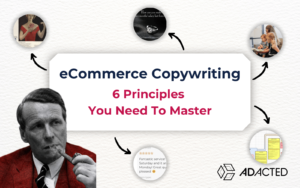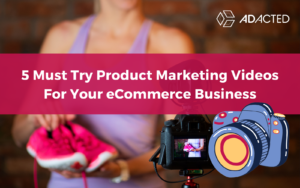You have developed a new product, hurray! The only problem is that products don’t sell themselves – we need a way to introduce them to our potential audiences. In this article, we will explore different ways of how to create a marketing plan for a new product.
What is a product marketing plan?
A product marketing plan is a map for getting your product out in front of different audiences in the most efficient way possible.
A product marketing plan will help you to conduct market research, find your strengths, explore potential audiences, develop your core marketing messages and choose the right tools for the job. A plan will also keep you on track with different activities you have done and are doing in the future so that you will know what works and what doesn’t.
Now that you know the why’s, let’s start creating the product marketing plan!
1. Know your product
To know where your product stands in the market, we need to start with some research.
Start by answering these questions:
- What problem does your product solve?
- Example: Our hand sanitizer removes dangerous bacteria from people’s hands and thus reduces the risk of getting sick.
- What differentiates your product?
- Example: Our hand sanitizer is easier to apply than most of what is available on the market.
- Why should someone buy your product?
- Example: It’s cheaper, more comfortable to use and smells better.
Depending on your control of the product, we added some advanced ideas that could be useful to you when you start building your product marketing strategy. These include a bit of competition research as well.
When answering these questions, keep your mind open – you could find a unique selling point you didn’t think about before.
- Where will you sell your product?
Will it be sold locally, through an online store or both?
Example: We found out that hand sanitizers are widely available both online and offline. We will try to differentiate from our competitors by only selling hand sanitizers in our online store.
- What is your potential selling price?
Example: We saw hand sanitizers in our size formats be sold between $5 and $15. Because we are trying to be an affordable premium type of product, we will try pricing our hand sanitizer somewhere in the middle.
- What are your costs for producing the product? Are there any other associated costs (shipping etc.)?
If possible, calculate your potential profit margin in different scenarios. This will be crucial when you begin budgeting your marketing efforts.
- How many SKU-s (stock keeping unit) will your product have?
Example: Our product will be sold in 3 different variants.
- Product size
How large is your product? Can you only sell locally or will international selling be a possibility in the future?
- Product durability
How durable is your product? This will affect shipping and handling.
- Consumable or disposable?
Is your product consumable or disposable? Perhaps you could consider a subscription-based marketing strategy?
- Is your product perishable?
Does your product have a long shelf life?
- Are there any specific regulations your product will have to follow?
2. Conduct market research
It’s time to find out how much interest there could be for your new product. There are many ways to conduct market research, but you don’t need to go super-specific on the first go.
You will need to start with some assumptions. For example, if you are selling hair gel for men you could identify how many men there are in the area where you sell, find sales statistics from bigger companies who sell similar products and try to play them out in your numbers.
If you are looking to introduce a new product, you might interview a set number of people to see how they react to your proposition.
To analyze existing needs on the market we could use some tools on the internet. Let’s see what tools we could use to find out more about the potential market size on the internet.
When researching, keep these 3 things in mind: potential market size, market trend, and seasonality.
It’s time to find out how much interest there could be for your new product. There are many ways to conduct market research, but you don’t need to go super-specific on the first go.
You will need to start with some assumptions. For example, if you are selling hair gel for men you could identify how many men there are in the area where you sell, find sales statistics from bigger companies who sell similar products and try to play them out in your numbers.
If you are looking to introduce a new product, you might interview a set number of people to see how they react to your proposition.
To analyze existing needs on the market we could use some tools on the internet. Let’s see what tools we could use to find out more about the potential market size on the internet.
When researching, keep these 3 things in mind: potential market size, market trend, and seasonality.
- Google Trends
Google Trends is a great tool to look at different keywords from Google’s perspective. This tool is useful for identifying if your product is in a growing, falling or flat market. It also helps to identify the seasonality of your market.
Check out our guide on how to use Google Trends for market research!
- Google Keyword Planner
Google Keyword Planner is a part of Google Ads. With this tool, you can see search volumes for different keywords, which could give you some indication and also show signs of seasonality.
- Buzzsumo
https://buzzsumo.com/ is a great tool for seeing what kind of content gets shared around on social platforms. You have to insert a keyword related to your new product to get the information.
3. Define your audience
Now that you know the properties of your product inside-out, it’s time to find out if there’s a good market for it and if so, where.
Let’s start by determining the perfect audiences for your product. Without knowing your audiences, it will be difficult to assess the potential market size.
What is a target audience?
Let’s start by defining what a target audience is.
A target audience is a group of people who share similar behaviors, interests and/or specific demographics. Target audiences are crucial for making marketing strategies, allocating budget, attracting new customers and developing your product.
For example, if you know that your product is mostly used by females, you could try to develop it in a way that is more appealing to women. This is an over-simplification – in reality, you can go much deeper into this topic.
- Find your target audience
Your target audience(s) should be defined by some characteristics like:
- Age
- Gender
- Location
- Income
- Employment
- Interests
- Etc.
This process will be much easier when you already have some data about your buyers. In that case, you could just start from going through the data and identifying who buys your products the most. If you don’t – no worry!
You can make audiences by making logical assumptions about your new product. Some questions that you could ask are:
- Who could be potentially interested in your new product? (Don’t say “everyone”. Try to go into as much detail as possible. Example: middle-aged women)
- What similar interests do these people have? (For example, these people could be grouped as “parents”, “students” etc.)
- What topics bind these people together? (For example, parents might be interested in topics such as “childcare”, “baby food” etc.)
Although these questions only scratch the surface, they could give you some ideas to start developing your target audience(s).
You can find out more about finding target audiences in this wonderful article by Hubspot.
- Create a buyer persona (Optional)
The next more advanced step could be to create a buyer persona for your new product.
What is a buyer persona?
A buyer persona is the profile of your ideal target customer built on audience research. Buyer persona mainly describes who your perfect customer is, but it can go as deep as illustrating their interests, buying decisions, groups they belong to, etc.
Read more about creating buyer personas in this article by Hootsuite.
4. Analyze your competitors
Knowing your competition is crucial to stay in the game. More often than not, analyzing competitors will give you a good hint about market dynamics, promotion strategies, targeted audiences and common themes about what things work to bring more sales. Let’s dive into it!
1. Identify your competitors
To find your competitors you could start by searching the internet using platforms like Google, Amazon and even Facebook. If your new product doesn’t classify under the standard categories, try to find the closest similar competing products.
2. Sort your competitors by relevancy
After you have found some companies, it’s time to sort them by importance – which ones are more important to follow and which ones you can occasionally check on.
Easy way to categorize your competitors is to sort them in three categories:
- Primary Competitors: These are the companies that you are competing with head-on. They are selling similar products and to similar audiences like you. These are the companies that your customers might compare you to (for example BMW and Volvo).
- Secondary Competitors: These are the companies who are selling similar products as you but to a different audience (for example a brand store that sells clothes vs general store which is also selling clothes, but at a different quality and price level).
- Tertiary Competitors: These are the companies which do not sell similar products to you, but they market to a similar audience (for example if the target audience is “college students”, a company that sells school supplies can be a tertiary competitor to a company which sells clothes for younger people).
When categorizing your competitors, make sure you track the basic information like:
- Name of the company
- Location
- Core products
- Strengths and weaknesses
You can add more tracking points as you conduct your research.
Learn more about in-depth competitor analysis here.
5. Set Goals
After you’ve analyzed your new product and did some market and competition research, it’s time to determine the goals you want to achieve through your new product marketing plan.
Your marketing goals will set the tone for marketing messages, strategy and budget. The most common method for setting marketing goals is using the SMART system, which means your goals should be specific, measurable, attainable, realistic, and time-bound.
An error many people make in the beginning is setting too broad goals:
- We want to increase sales
- We want to rank number one in Google
- We want to have more website visitors.
Goals like these don’t have a beginning or an ending – they are not specific enough, are difficult to measure and aren’t time-bound. For example, although increasing sales is realistic and attainable, it’s something that should be happening through your marketing activities anyway.
Instead of setting broad goals, you could specify them a bit, for example:
- We want to increase monthly sales revenue by __%
- We want to rank in top 3 on Google for the keyword “best hand sanitizer”, which should bring us around 1500 new visitors each month
- We want to have increase website traffic by 100 monthly visitors
A good resource on setting marketing goals we recommend reading: How to come up with 2020 marketing goals based on business goals.
6. Develop core marketing messages
Now that you have your goals set, let’s define your core marketing messages which you will use in your marketing strategies.
The core marketing message is how you explain your unique value proposition (UVP) to your potential customers. It sets the frame for your strategies, which could be social media advertising, Google Ads, video marketing and so on. Every piece of content you produce should align with your core marketing message.
The core marketing message helps you build a recognizable brand voice and gives people something to connect with.
How to develop your core marketing message
- Explain why your product is different and how it can help people.
Try to describe some specific pain points that your product solves for people. Use your competitor research to see how they position themselves and be creative. Find ways to be different and perhaps you can cover some points that your competitors missed in their core marketing message.
- Incorporate stories in your core marketing message
Can you find a way to make your product more personal? Perhaps there is a story as to why you started making your products. For example, some companies include family heritage, secret recipes that have been passed on or some other interesting stories in their core marketing message.
- Don’t make fake promises
Tell people the truth. If there is no basis for miracle benefits that you promise, people will find out eventually. Be as genuine as you possibly can and accurately describe your product.
7. Develop a marketing strategy (game plan)
We have finally arrived at the actionable part of your new product marketing plan! This is the stage where you take your research, market knowledge and start finding ways to reach your marketing goals.
There are countless ways you could reach your potential customers. To keep things from getting too confusing, start by thinking of some categories you could list your ideas under. Since you are selling products, this means you could have 2 different categories, for example, local marketing strategy and international marketing strategy.
For the sake of this example, some ideas for the local marketing strategy could be:
- Participating in different local events;
- Making pop-up stores in malls or places where many people walk by;
- Making locally-focused social media advertisements;
- Writing press releases, content marketing.
Some ideas for your international marketing strategy could be:
- Getting your product to Amazon (or other resellers);
- Ranking your website for keywords that describe problems that your product solves;
- Running digital marketing campaigns to sell your product.
After having these broader topics of what you want to do, you can build out each idea into a roadmap where you will include all the tools and approaches that you will need to implement the idea.
8. Set a budget
The reason we didn’t list the budget before marketing strategy is, that we don’t want to hamper the flow of ideas too early. You might not have a budget for some activities right now, but that doesn’t mean you couldn’t put those ideas aside for the future.
We believe the most important things to know when setting a budget for new product marketing activities are operational costs and ROI (return on investment) needed for justifying the marketing activity cost.
We already know our operational costs from the research we made in the first chapter (1. Know your product) and now it’s time to try to estimate potential ROI different marketing strategies can have.
Sadly, there are no guarantees there, but you can set a minimum ROI needed to keep or leave a marketing strategy. If you know that for example, Google Ads is bringing in a steady 3.0 ROI (for every $1 spent on ads you get $3 in sales), you can calculate what your net profit is and decide if you want to keep advertising there or not.
Keep in mind that on many strategies you could start seeing a return on investment over a longer period (for example branding activities or SEO), so don’t get too eager if you don’t see a return right away. Which brings us to the next point:
9. Tracking progress
Decide on how you will track the progress of different marketing activities. Digital marketing has made our life much easier because we can have all the statistics in numbers – website visitors, online buyers, advertising budget spent per purchase, etc.
We must remember though, that bigger part of marketing still goes on outside of the screens, where it’s not so easy to measure progress and numbers. When doing more traditional marketing, the best way to measure success is by comparing your activities to the sales revenue.
We like to think of marketing as making connections between different things: if you can find a profitable link between marketing activity and an increase in sales, you have already won half of the battle.
10. Set a timeline
Finally, it is crucial to have time boundaries for your activities.
Make a roadmap for when do you want to have your:
- Marketing goals met;
- Set strategies implemented;
- Marketing activities assessed.
Remember, marketing is all about testing and finding the right combinations for your new product.
Good luck with making your new product marketing plan!
Looking for a professional team to scale your online revenue through paid advertising? Contact us today!







